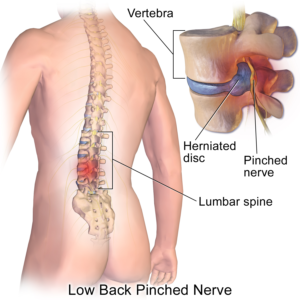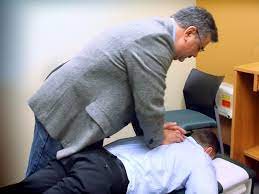Lower Back pain is the most common health problem, that people facing
nowadays. The four different regions of the vertebral column include the cervical, Thoracic, Lumbar, and pelvic region. If the pain occurred in the cervical region then it is called neck pain, pain in the lumbar is lower back pain and pain in the thoracic region is middle back pain. Back pain is a pain of any nature felt in any region which is ranging from the thoracic spine to the pelvis.
SYMPTOMS OF BACK PAIN:
The intensity of the pain may vary from one person to another person depending on the location of back pain, causes of back pain etc. The main symptoms of back pain include
• Muscle ache
• Shooting or stabbing pain
• Pain that radiates down the leg
• Pain that worsens with bending, lifting, standing or walking
• Pain that improves with reclining
• Inflammation on the back
• May cause numbness and tingling
• Back pain after an injury
• Back pain along with
Weakness, pain in legs
Fever
Weight loss
Pain while urinating
TYPES OF BACK PAIN:
Based on the duration of symptoms, an episode of back pain may be categorized as follows,
1. Acute back pain: happens suddenly and the pain lasts for <6 weeks
2. Sub-acute back pain: can come on suddenly or over time and the pain lasts
between 6-12 weeks
3. Chronic back pain: may come on quickly or slowly and the pain lasts for greater than 12 weeks
LOWER BACK PAIN CAUSES:
Numerous different effects, including mechanical or structural problems with the chine, seditious conditions, and other medical conditions can cause back pain
• Strains and sprains sprain:
is an injury to the ligaments that are responsible for supporting the chin, frequently from wringing and strain is nothing but an injury to the muscle or a tendon.
• Herniated Discs:
This is also called a slipped, bulged, or ruptured slice. It’s a problem associated with one of the resilient discs that are present in between the bones that mound to make a chine. This can do in any part of the chine. The discs also compress and irritate near jitters.
• Slice Degeneration complaint:
This is also called the DDD. This is a condition where the aging causes the discs between the chines of the backbones gets break down. It’s an age-related condition. In this condition, one or further discs in the reverse will lose their strength.
• Osteoporosis:
It’s a complaint that weakens the bones and makes them more brittle and fragile from loss of towel this can lead to painful fractures of the chines.
• Infections of the spine:
Infections involve the bones of the chine or the discs between these bones, which can be infections that cause back pain including osteomyelitis, septic discitis, paraspinal abscess, and epidural abscess.
• Abnormal shape of the spine
• Inflammatory back pain Sacroiliac joint pain
• Other conditions that can cause low back pain such as cancer of the spine, Bladder
infections, kidney stones, kidney infections, pelvic
• Inflammatory disease: such as Ankylosing spondylitis, a type of arthritis of the
spine.
• sleeping disorders
• Posture related such as improper bending, standing, or sitting.
RISK FACTORS:
For anyone, back pain can develop including children and teens. The following are the factors that can increase the risk of developing back pain:
1. Age: Back pain is more common with ages above 30 or 40 time.
2. Smoking: Smokers have increased rates of reverse pain When compared to non is because smoking causes coughing, which can lead to herniated disks. Smoking also can drop blood flow to the chine and increase the threat of osteoporosis.
3. Lack of exercise: Weak muscle 4. redundant weight redundant body weight puts further stress on the reverse which leads to pain
5. Diseases: Some types of arthritis and cancer, osteoporosis, etc. Can be suitable to contribute to back pain. 6. indecorous lifting Using the reverse for lifting rather than using legs can lead to back pain.
6. Psychological conditions: susceptible to depression and anxiety appear to have a lesser threat of reverse pain. Stress can beget muscle pressure, which can contribute to reverse pain.
Lower Back Pain treatment
Nonmedical
Back pain of any type is generally first treated with nonpharmacological therapy that is without providing the medication. If it does not get cured then the medication will be prescribed.
• Heat therapy which is useful for back spasms or other conditions. Heat therapy can reduce the symptoms of acute and subacute back pain
• Massage therapy provides short-term pain relief, but not functional improvement, for those who suffer from acute lower back pain. It may also relieve short-term pain and functional improvement for those with chronic back pain.
• Regular exercise should be done in the presence of the health care professional.
• Maintaining of good sleeping posture.
Medication
Medication that is given mainly depends on the type of pain.
• Painkillers such as NSAIDs (non-steroidal anti-inflammatory drugs) are typically attempted first for any kind of pain.
• Skeletal muscle Relaxants if the pain does not get relief which pain relievers then muscle relaxers are used. These are effective in the relief of acute back pain. This medication may cause dizziness or sleepiness.
• Topical pain relievers are those which is applied on the surface of the skin such as creams, gels, ointments, and patches. Any medication will deliver the drug through the skin.
• Narcotics: severe back pain which is not relieved by NSAIDs then opioids may be used with close medical supervision.
• Antidepressants particularly tricyclic antidepressants are used only in chronic conditions, they reduce pain and help to gain function.
Epidural corticosteroid injections (ESI) are steroid injections that are
injected into the epidural space. The steroid medications will reduce the
inflammation resulting in decreased pain and improving its function.
Click Here To Buy
Surgery
Surgery is done in very rare conditions. Patients who suffer from herniated disc surgery may be an option. There are multiple surgical options are there to treat back pain, and these options depend upon the cause of the pain. Examples of surgical procedures include fusion, discectomy, insertion of the artificial disc, etc.



